What I Buy and Why
Bay Area Fixtures Pamela and David Hornik on Supporting Contemporary Art—With the Help of Their Dogs
The couple explains that sometimes loving art means putting it in a sock drawer.
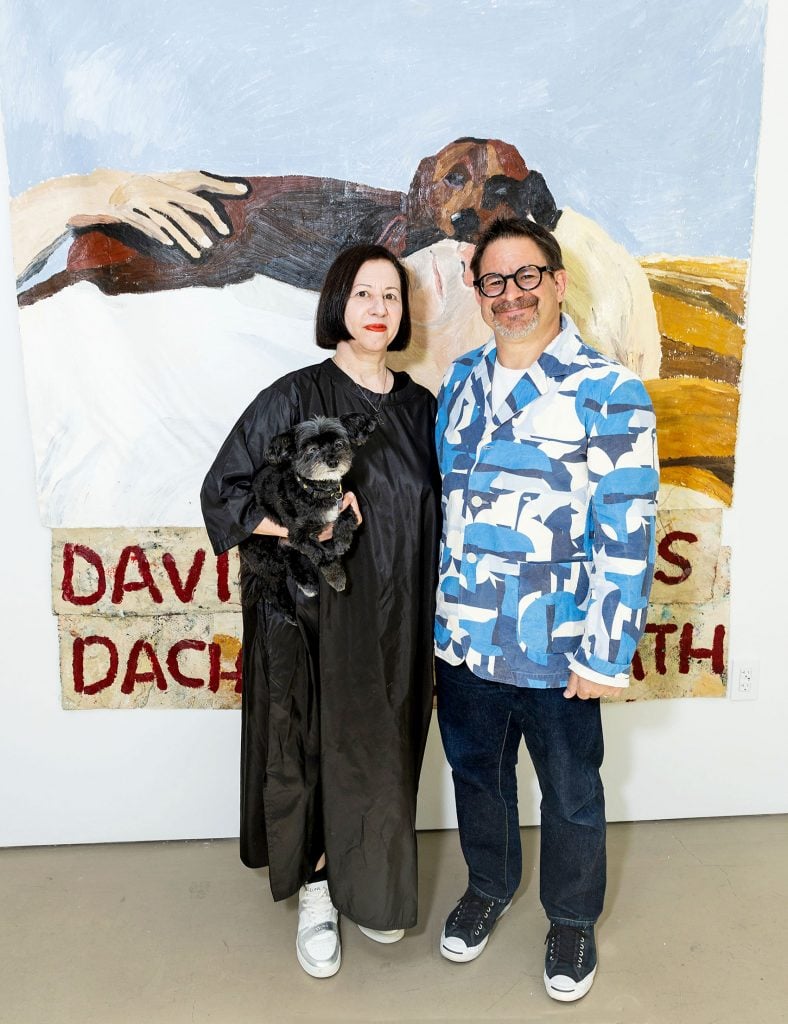
“Pamela Hornik spends all day, every day, obsessing over art.” Those are the words of David Hornik, her husband, who’s well-positioned to know. Not only is Pamela a founding member of the Institute of Contemporary Art San Francisco (ICA SF)—which opened in October 2022 with a solo exhibition by the Choctaw-Cherokee artist Jeffrey Gibson—she regularly supports emerging artists in countless ways, from funding their exhibitions to publishing their books. Further, she sits on the board of Stanford’s Cantor Arts Center, where she’s volunteered for well over a decade, and serves on the management committee of the Anderson Collection, also at Stanford University—not far from where the couple lives in Palo Alto.
David Hornik is equally invested in the arts. A founding partner of the venture capital firm Lobby Capital, he currently serves as commissioner of the Smithsonian American Art Museum in Washington, D.C., has sat on GLAAD’s board for nearly a decade (among numerous public and private companies and nonprofits), and teaches entrepreneurship at both Stanford’s Graduate School of Business and Harvard Law School.
Their professional bona fides aside, Pamela and David Hornik have emerged as eccentric yet entirely approachable fixtures on the contemporary art scene, spotted at gallery jaunts up and down the Bay Area—often with their two small dogs in tow. So smitten are they with their pooches that Pamela recently organized an exhibition, “Some Dogs,” showcasing no fewer than 65 canine-related works from the Hornik collection. A second iteration will travel to the Green Family Art Foundation in Dallas in February 2024.
On the collecting front, the Horniks typically train their energies on figurative works that “reflect the personhood of a broadly diverse and inclusive global population,” David explained to Artnet News. The collection includes Chantal Joffe, Ebony G. Patterson, Chuck Close, Joan Brown, Katherine Bernhardt, Alex Katz, Amir Fallah, Jordan Casteel, and Hope Gangloff. In addition, the couple supports museum exhibitions around the country by loaning works—a dozen, currently—and donating still more.
We spoke with the Horniks about the evolution of their collection and their commitment to contemporary artists.
What was your first purchase?
Our first real art purchase was a surprisingly large painting by a Stanford professor named Kevin Bean called Winter Light. Professor Bean had a show of his work at the local arts school where our kids took music lessons. Every time we dropped off the kids, we found ourselves lingering over these beautiful faceless figurative paintings, until one drop-off when we gave in and bought one. It hung in our living room for many years.
What was your most recent purchase?
We just acquired an absolutely beautiful embroidered work by Suchitra Mattai. The piece is currently in Suchitra’s first show with Roberts Projects in Los Angeles. We absolutely love her intricate work and are excited that she has an upcoming show at the Institute of Contemporary Art San Francisco in the fall of 2024. We helped launch the ICA SF last year and we both sit on the board.
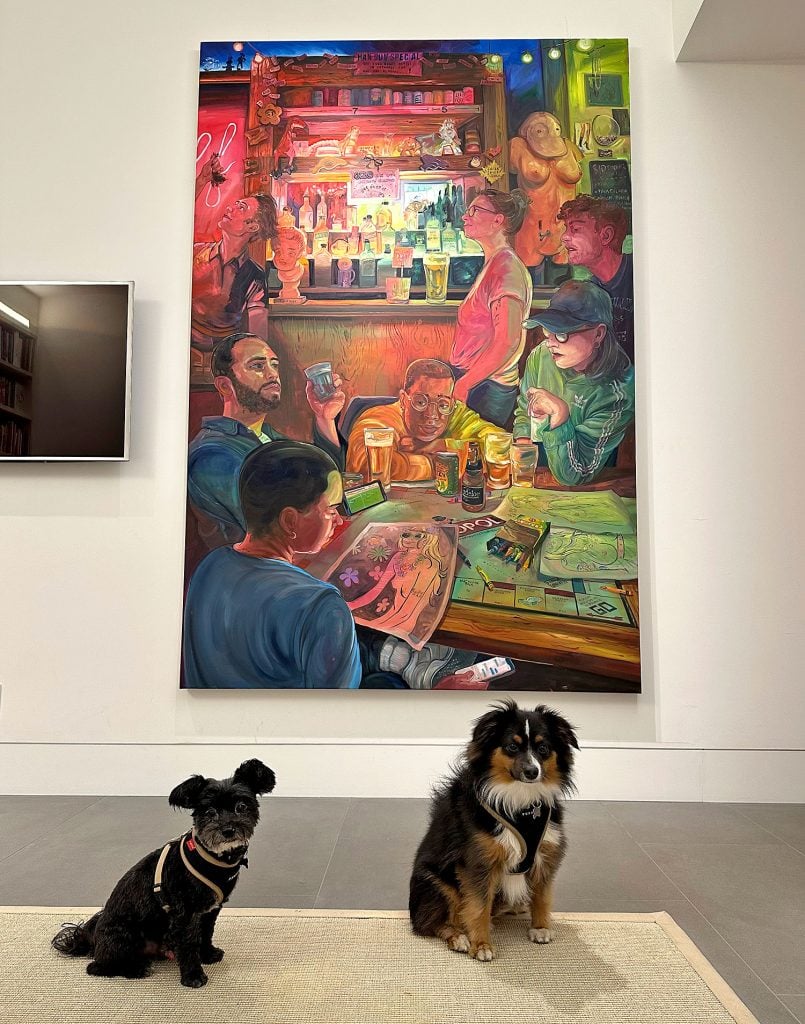
Rebecca Ness, Night out at Boobie Trap (2022). Courtesy of Pamela and David Hornik.
Tell us about a favorite work in your collection.
David: We acquired this unbelievably fun painting by Rebecca Ness called Night out at Boobie Trap from Jessica Silverman Gallery in San Francisco. The little details in the painting of this iconic lesbian bar in Brooklyn are so much fun.
Pamela: Anything by Chantal Joffe. We have quite a few. But not enough.
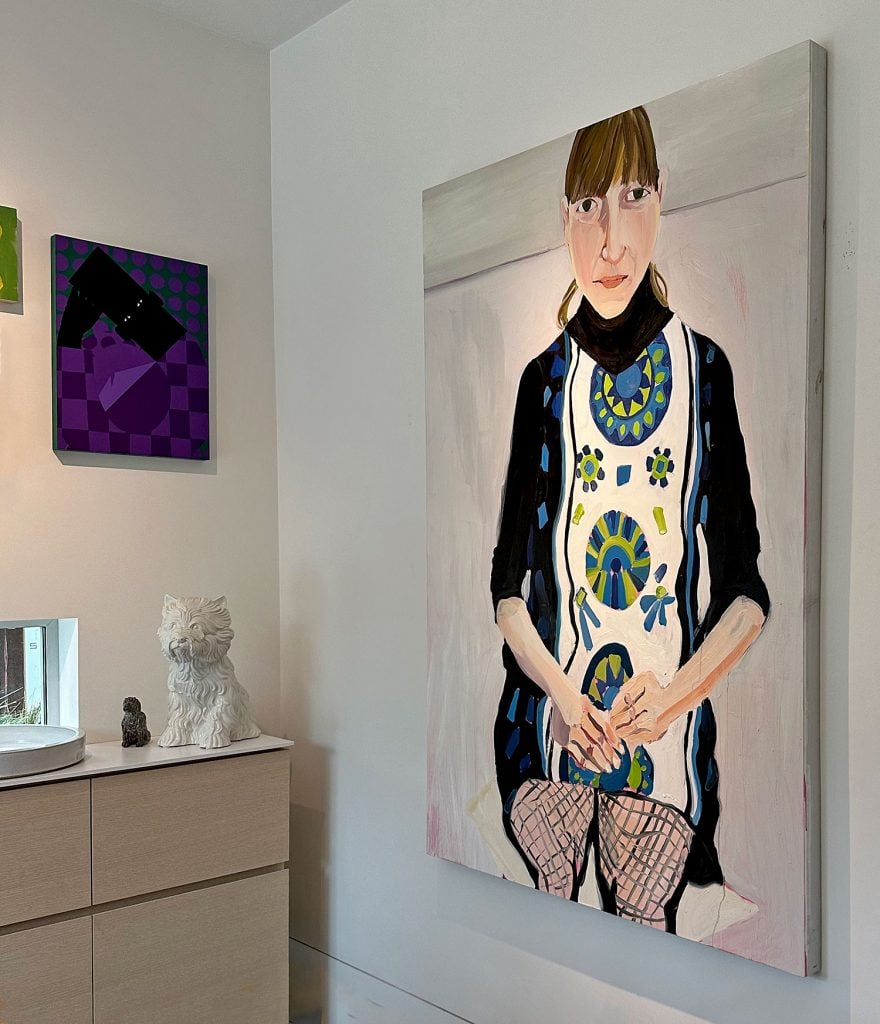
Chantal Joffe, Sally in Fishnets (2013). Courtesy of Pamela and David Hornik.
Which works or artists are you hoping to add to your collection this year?
We don’t really work that way. We have lots of artists we love, but we don’t have lists. We see as much art as we possibly can and we acquire the work that speaks to us.
What is the most valuable work of art that you own?
We have a 10-year-old rescue dog named Teddy with whom Pamela is obsessed. Teddy was the star of our recent “Some Dogs” art exhibition. It is a little absurd how many paintings we have of Teddy, and they are for sure our most valuable works. We love them so much.
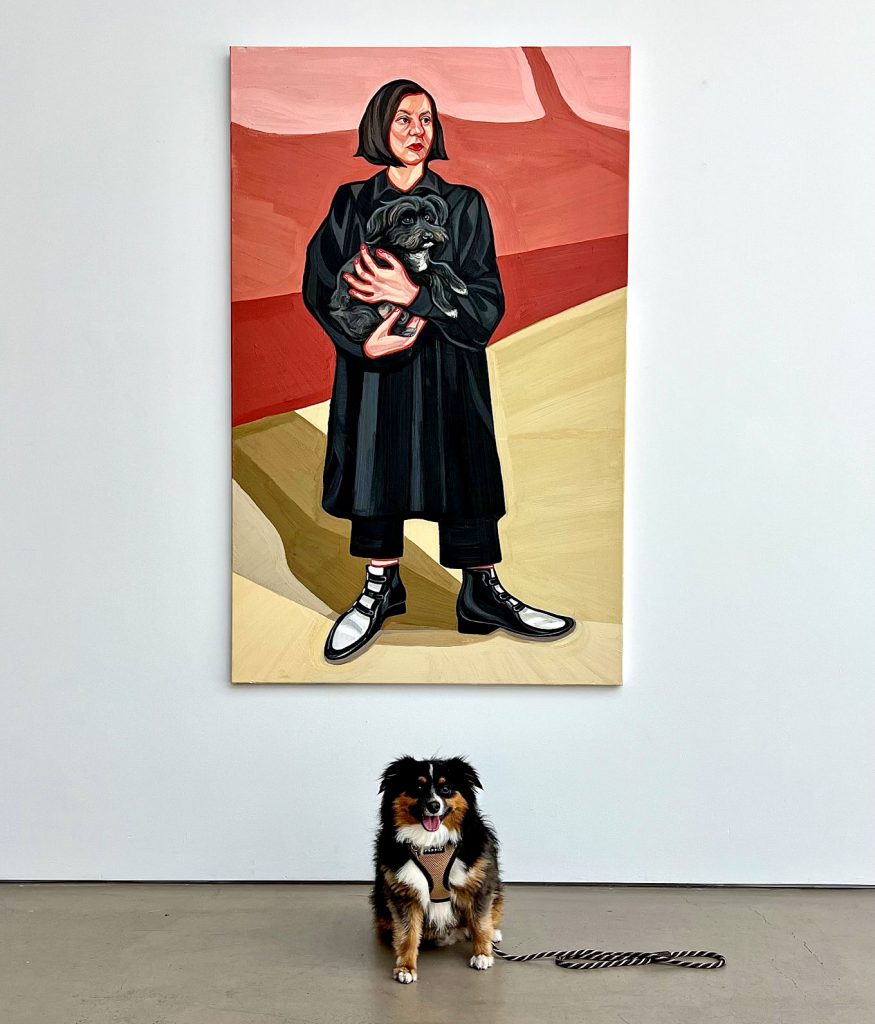
Portrait of Pamela Hornik by Ania Hobson. Courtesy of Pamela and David Hornik.
Where do you buy art most frequently?
There isn’t really a ‘most frequently.’ One day we’ll buy a photo from Fraenkel; the next day, a painting from Jack Shainman; the next day, an embroidery from Hales; the next day, a mixed-media work from Creative Growth. The next day…
Is there a work you regret purchasing?
Nope. All work is great work. We love art and love supporting artists.
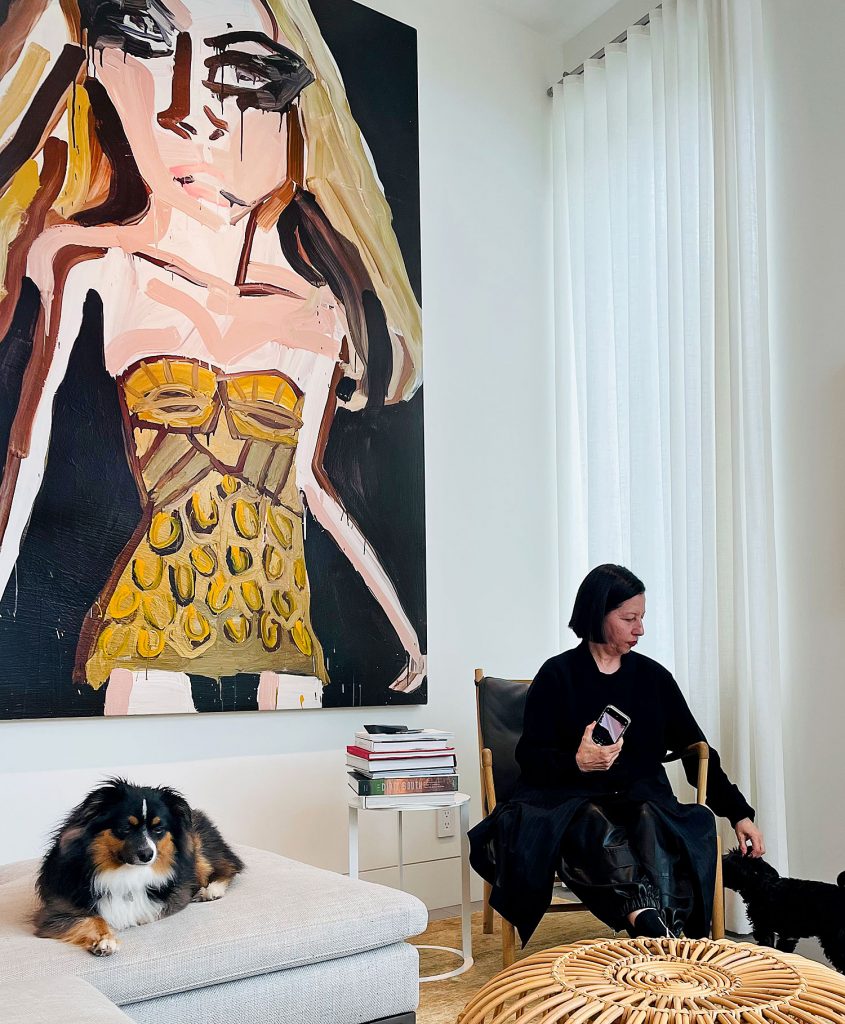
Katherine Bernhardt, Kate Moss with Versace dress (2007). Courtesy of Pamela and David Hornik.
What work do you have hanging above your sofa? What about in your bathroom?
It depends upon the sofa. Over one sofa we have a portrait of Kate Moss by Katherine Bernhardt—Kate Moss with Versace dress (2007), to be precise. Over another sofa we have a new painting by Livien Yin called Women (2019) of, well, some women. Over another sofa we have a wood-inlaid portrait On Thinking Thoughts Are Feelings (2020) of a naked pregnant woman by Alison Elizabeth Taylor. Over another sofa we have the painting An Afternoon Making Quaranzines with Apex for Youth (2022) by Susan Chen. We have no art in our bathrooms.
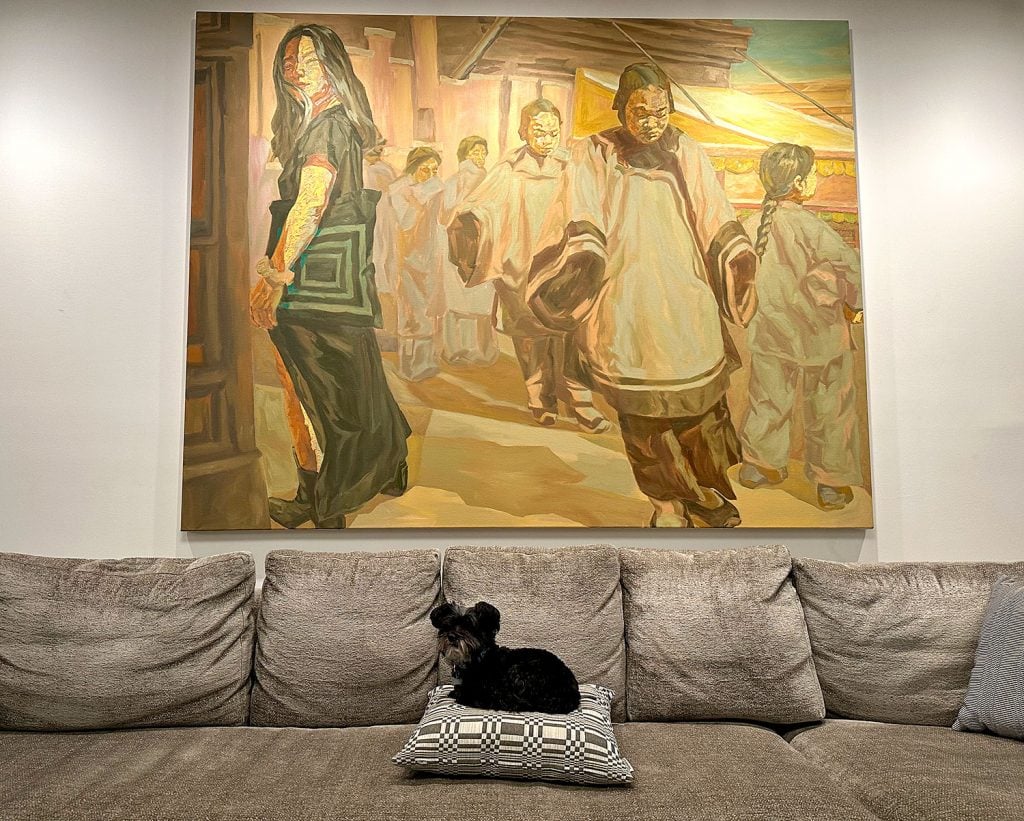
Livien Yin, Women (2019). Courtesy of the Horniks.
What is the most impractical work of art you own?
We have a number of Warhol Polaroids. When we bought our first couple of Polaroids, we asked a curator at the Cantor Arts Center, where Pamela has volunteered for 14 years, what we could do to protect them from the sun. Her answer was, leave them in your sock drawer.
What work do you wish you had bought when you had the chance?
In 2016 we reached out to Amy Sherald through her website to tell her how much we loved her work. We asked if she was represented. She connected us with Monique Meloche, who offered us three beautiful paintings. We should have bought all of them. We bought none. I wish I knew why.
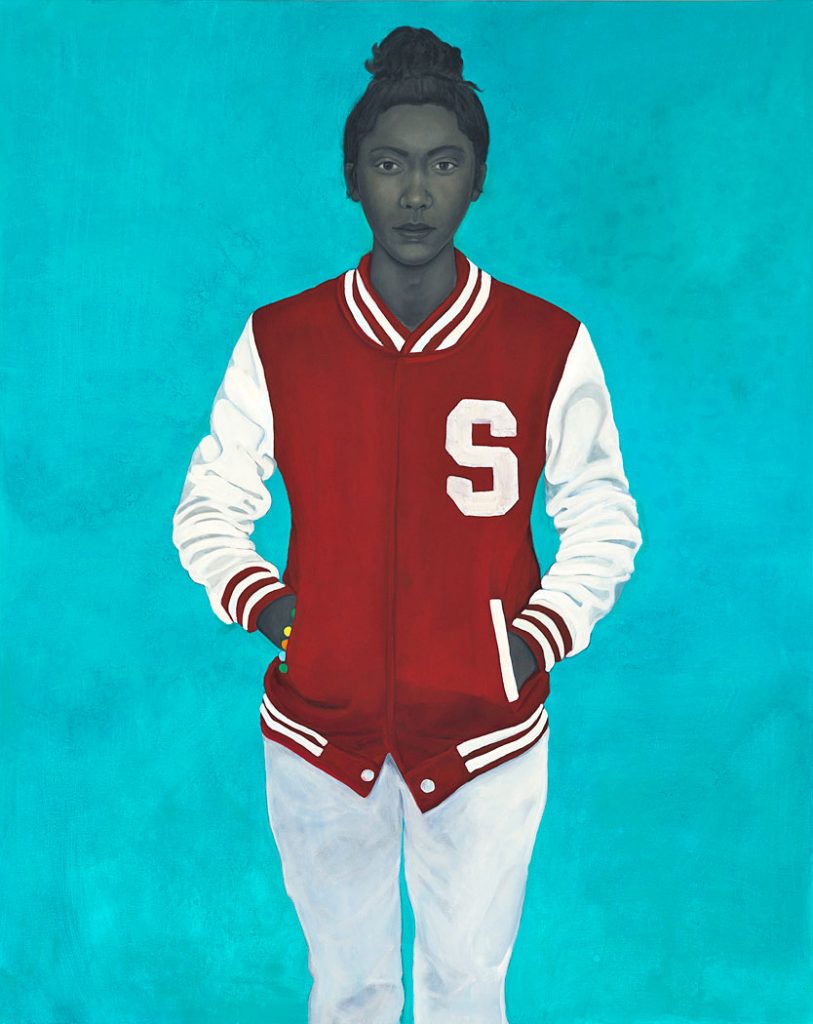
A work by Amy Sherald. Courtesy of Pamela and David Hornik.
If you could steal one work of art without getting caught, what would it be?
David: I can never get enough of Jenny Saville’s epic triptych Strategy (1994) at the Broad Museum in L.A. But at 9 by 21 feet, it would be pretty tough to steal.
Pamela: I fell in love with Paisley and I (Bomber and Batsy), 2021, Chase Hall’s self-portrait with his great dane Paisley, when I first saw it in Brooklyn in 2021. It is now part of the Hammer collection in L.A.





